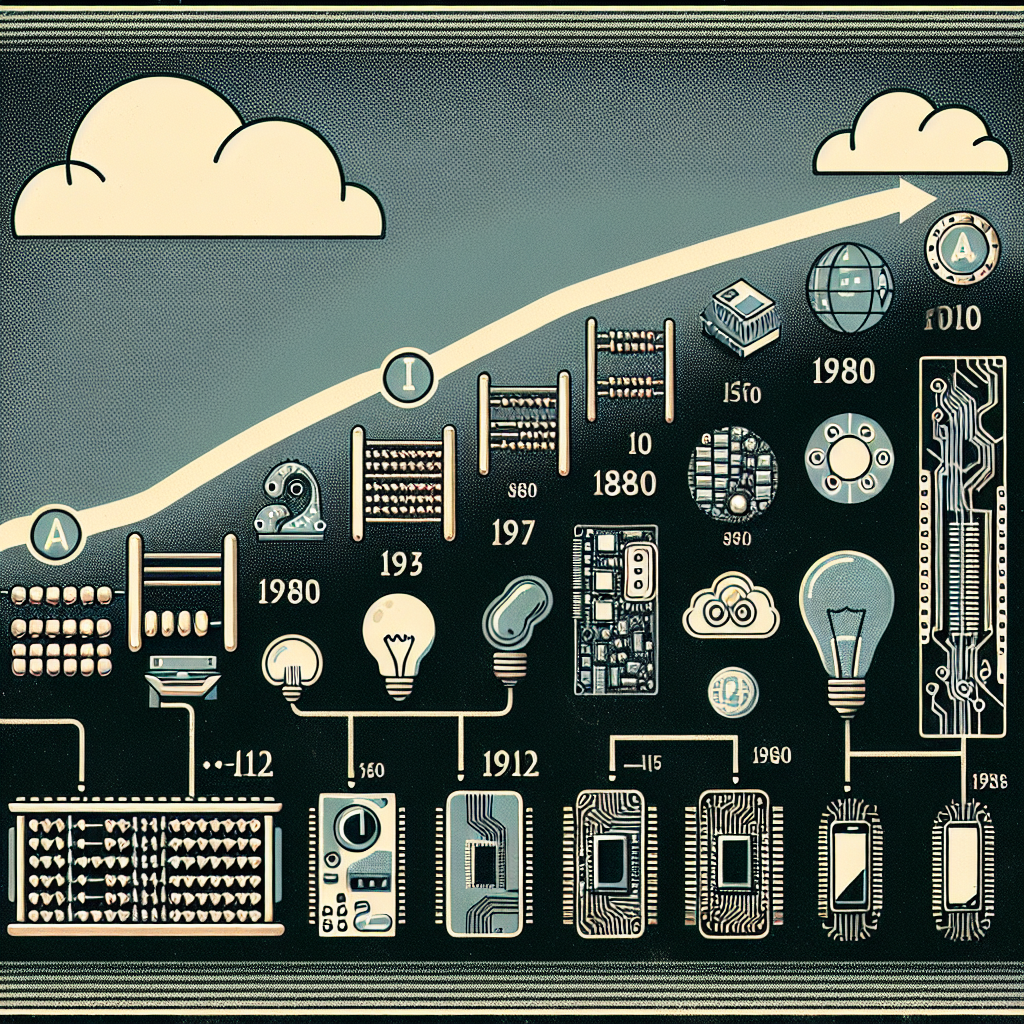The Evolution of AI and Machine Learning Technologies
Artificial Intelligence (AI) and Machine Learning have been two of the most rapidly evolving technologies in recent years. These technologies have transformed many industries and have the potential to revolutionize the way we live and work in the future. In this article, we will explore the evolution of AI and Machine Learning technologies, their impact on various industries, and what the future holds for these technologies.
AI and Machine Learning have their roots in the early days of computing, with pioneers like Alan Turing and John McCarthy laying the foundation for what would later become AI. The term “AI” was first coined in 1956 at the Dartmouth Conference, where researchers gathered to discuss the possibility of creating machines that could think like humans. Since then, AI has gone through several waves of development, each building on the advancements of the previous one.
The first wave of AI research focused on symbolic AI, where machines were programmed to follow rules and logic to perform tasks. This approach had limited success, as it was difficult to program machines to handle complex and uncertain situations. The second wave of AI research, known as connectionism, focused on neural networks and learning algorithms inspired by the human brain. This approach showed promise in solving complex problems, but it was limited by the lack of computing power and data.
The breakthrough in AI came with the advent of Machine Learning, a subset of AI that uses algorithms to learn from data and make predictions. Machine Learning algorithms can analyze vast amounts of data to identify patterns and make decisions without being explicitly programmed. This has enabled AI to tackle complex problems like image and speech recognition, natural language processing, and autonomous driving.
One of the key drivers of the rapid advancement of AI and Machine Learning technologies is the availability of massive amounts of data. The rise of the internet, social media, and connected devices has led to an explosion of data, which has fueled the development of AI algorithms. Companies like Google, Facebook, and Amazon have leveraged their vast data resources to develop cutting-edge AI technologies that power their products and services.
Another factor driving the evolution of AI and Machine Learning technologies is the increasing computing power available today. Advances in hardware, such as GPUs and TPUs, have made it possible to train large-scale Machine Learning models on massive datasets in a fraction of the time it would have taken a few years ago. This has enabled researchers and developers to experiment with complex AI algorithms and push the boundaries of what is possible.
The impact of AI and Machine Learning technologies on various industries has been profound. In healthcare, AI is being used to analyze medical images, diagnose diseases, and personalize treatment plans for patients. In finance, AI algorithms are used to detect fraud, predict market trends, and optimize trading strategies. In transportation, AI powers autonomous vehicles that can navigate roads and make decisions in real-time. In manufacturing, AI is used to optimize production processes, reduce downtime, and improve quality control.
Despite the many benefits of AI and Machine Learning technologies, there are also challenges and concerns that need to be addressed. One of the key challenges is the ethical implications of using AI algorithms to make decisions that affect people’s lives. Bias in AI algorithms, lack of transparency, and accountability are all issues that need to be addressed to ensure that AI is used responsibly and ethically.
Another challenge is the potential impact of AI on jobs and the workforce. As AI becomes more advanced, there is a fear that it will automate many jobs and lead to mass unemployment. While it is true that AI will disrupt certain industries and job roles, it is also creating new opportunities for innovation and growth. Companies that embrace AI and invest in reskilling their workforce will be better positioned to thrive in the future.
Looking to the future, the evolution of AI and Machine Learning technologies will continue at a rapid pace. Advances in areas like deep learning, reinforcement learning, and quantum computing will open up new possibilities for AI applications. The convergence of AI with other technologies like the Internet of Things, blockchain, and 5G will create new opportunities for innovation and disruption.
FAQs
Q: What is the difference between AI and Machine Learning?
A: AI is a broad field of study that aims to create machines that can perform tasks that typically require human intelligence, such as reasoning, problem-solving, and learning. Machine Learning is a subset of AI that uses algorithms to learn from data and make predictions without being explicitly programmed.
Q: How is AI being used in healthcare?
A: AI is being used in healthcare to analyze medical images, diagnose diseases, personalize treatment plans, and predict patient outcomes. AI algorithms can process vast amounts of data to identify patterns and make decisions that can help improve patient care.
Q: What are some examples of AI applications in finance?
A: AI is used in finance to detect fraud, predict market trends, optimize trading strategies, and personalize customer service. AI algorithms can analyze large datasets to identify patterns and make decisions that can help financial institutions improve efficiency and reduce risk.
Q: What are some challenges of using AI in real-world applications?
A: Some challenges of using AI in real-world applications include bias in AI algorithms, lack of transparency, accountability, and ethical implications of using AI to make decisions that affect people’s lives. Companies and researchers need to address these challenges to ensure that AI is used responsibly and ethically.
In conclusion, the evolution of AI and Machine Learning technologies has the potential to transform industries, improve efficiency, and create new opportunities for innovation. While there are challenges and concerns that need to be addressed, the future looks bright for AI as it continues to advance and reshape the way we live and work.

